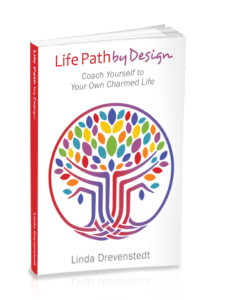
Nov 4, 2019 | Inspiration For Your Life Path

In Part One, I discussed the fairy tale falsehood that what you do or say and don’t do or say is the ultimate cause of another’s happiness. You take on the unrealistic expectation that your job is to make others “happy.”
You are NOT responsible for another person’s happiness.
This is never truer than with your adult children. ALSO, the reverse…
Your adult children are NOT responsible for your happiness. Nor are they responsible for making you proud or for endorsing your beliefs and values.
On Children
Your children are not your children.
They are the sons and daughters of Life’s longing for itself.
They come through you but not from you,
And though they are with you, yet they belong not to you.
You may give them your love but not your thoughts,
For they have their own thoughts.
You may house their bodies but not their souls,
For their souls dwell in the house of tomorrow, which you cannot visit, not even in your dreams.
You may strive to be like them, but seek not to make them like you.
For life goes not backward nor tarries with yesterday.
You are the bows from which your children as living arrows are sent forth.
The archer sees the mark upon the path of the infinite, and He bends you with His might that His arrows may go swift and far.
Let your bending in the archer’s hand be for gladness;
For even as He loves the arrow that flies, so He loves also the bow that is stable.
– Kahlil Gibran From The Prophet (Knopf, 1923). This poem is in the public domain.
 Read and meditate/pray on Gibran’s words. Journal any feelings, upsets or dashed expectations about your adult children.
Read and meditate/pray on Gibran’s words. Journal any feelings, upsets or dashed expectations about your adult children.
How does this work in real life? You and your spouse (if you are single, go it solo) will need time to sort out the boundaries you want to set. Also consider the expectations that might need to be let go.
Boundary suggestions, examples…
Sample boundary: We will financially support our children through _______ level of education. Because we are the financial support, we have a say in what we pay for and what we don’t pay for.
Example: We agreed to pay for bachelor’s level education with these stipulations: an in-state school, dormitory lodging, campus food. We pay car insurance, car payment, cell phone (reasonable) and clothes. All come with a budgeted allowance.
This is an example from my husband and I (PS – We are a second marriage each with two children, so this conversation is critical to harmony and peace between you as a couple.)
Here is the tough love part; You have to keep the boundary in place because requests will come up and you best be prepared with the answer AND potential backlash.
Here are two we faced…My son wanted to move out of the dormitory and live in a rented house that his friends had found to rent. Here is how our boundary was used to respond to his request.
“You may live off-campus if you can live there and eat within the amount we are paying now for dormitory and food plan at the college.” I even asked my son to look up the detailed information. He got back with a monthly amount equivalent to the college dormitory and food plan. This is the amount of the monthly check we sent him. It was up to him to budget and make the money last the month long. Then summer came. He found that to keep the house he and roommates needed to pay rent over the summer. He asked if I would pay the rent and I told him that if he came home for the summer (which I really wanted) there would be no additional expense. If he wanted to help keep the house, he would have to find a job to pay the rent and for food. We would continue to pay for the car and insurance.
Though I would love to have more time with my son, I knew he had to make the decision within my boundaries. He found a really good job, with a mentor boss who taught him to make wonderful pies, (side benefit). He worked for a seafood market and restaurant. We ate at the restaurant after his graduation.
Sample boundary: Here is a second boundary to consider. We take care of all living expenses while our children are working on getting their bachelor’s degree. If after college they wanted to come live with us, they could do so room-and-board free for 90 days. After 90 days they would have to pay rent and do household chores as well as live with our values. This meant no spending the night with lovers in our home; letting us know if they were coming home at night (not a curfew; they are adults) and living with household guidelines, such as doing your own laundry and dishes. (Do Not become the maid for your adult children in your home.)
Example: Ted’s daughter showed up single and pregnant after receiving her bachelor’s degree. She wanted to come live with us and go back to school to become either a physical therapist or an occupational therapist. She wanted Ted, (after all he was retired), to be the baby’s caregiver while she was in school.
We’d paid for her bachelors as agreed, and she paid, (borrowed on student loans), for a masters. However, none of the degrees led to a paying profession. Now, as a single pregnant mom she wanted a profession to provide her child a good life.
The best predictor of future behavior is past behavior.
We were faced with a dilemma. We all love our children. In blended families we see how different household expectations, when merged, can be a challenge.
I knew from the past that “tough love” was not always present in the relationship my stepdaughter had with her father. During her times in our home and when we visited her, let’s say messy was the standard.
 Add that to the fact that I ran my consulting business out of our den. I could envision a crying newborn in the background while I am talking to a client.
Add that to the fact that I ran my consulting business out of our den. I could envision a crying newborn in the background while I am talking to a client.
I meditated. Ted pondered. Then, we talked and cried. We knew that having a new baby in the home full-time would not be a good idea. Ted already had a tricky back and I needed to run a business.
This was our boundary compromise. We were living in Florida when the real estate market was down. I was making good money with my business. I agreed to buy a small investment house in St. Augustine where we lived. Ted’s daughter could live there while in college, rent-free.
Ted agreed to pay for childcare but not to be the full-time caretaker of a baby. She would have to find her own student loans for her education.
She did not like this choice and made other arrangements. Ted paid for childcare until she graduated. She did finish her degree but there was a bit of strain in our relationship until our grandson arrived. Ted went to the hospital to be with her for the birth. All is well now.
Adult children need to live with the consequences of their choices.
Your happiness is your stuff, your business. Your adult children need to know that their stuff is their stuff. You need to let them mature and learn how to recover from life’s upsetting events, wrong turns and poor choices. Let them learn to take responsibility for their actions instead of coming to you for a rescue. They learn how to make good decisions next time by making some bad decisions.
Take care of YOU, the one you can make happy. Michael Jackson said it best, “Learning to love yourself it the greatest love of all.” Learn to love yourself first. Get back in touch with your happiness. Live more from the inside out rather than the outside in. Your happiness is an inside job. If you expect something or someone to make you happy, then you will live in a disappointed, unfulfilled state. If you have been living outside-in, it may take a while for you to find your own happy place. It may take unplugging from constant stimulation of being a rescuer—a hero. Learn to be happy with yourself without an expectation that your adult children will do what you want.
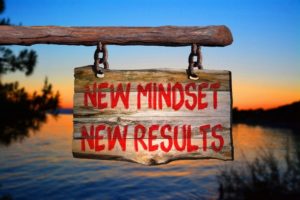 Go on your own self -discovery journey as an empty nester. Your job is to discover what makes you happy. Once you know what makes you happy, you can share that with others, including your adult children. More than anything, children need to learn the consequences of their behavior, (Cause and Effect). Children are here to experience life and the lessons that come with life events. Some seem to be here for hard lessons, while others seem to have it easier. Ours is not to ask “Why?”
Go on your own self -discovery journey as an empty nester. Your job is to discover what makes you happy. Once you know what makes you happy, you can share that with others, including your adult children. More than anything, children need to learn the consequences of their behavior, (Cause and Effect). Children are here to experience life and the lessons that come with life events. Some seem to be here for hard lessons, while others seem to have it easier. Ours is not to ask “Why?”
Love does not mean overprotecting, rescuing or accepting anything they do as your problem. As my Mom used to say, “I love you all the time, but I don’t like what you do at times.”

Oct 7, 2019 | Inspiration For Your Life Path
 Setting and keeping boundaries are foundations for healthy relationships, healthy self-esteem and worthiness. Healthy self-esteem allows you to take care of yourself, your values and needs in a healthy relationship. The funny thing is that life constantly presents you with the balancing act between OTHERS’ needs, wants and desires and YOUR own needs, wants and desires.
Setting and keeping boundaries are foundations for healthy relationships, healthy self-esteem and worthiness. Healthy self-esteem allows you to take care of yourself, your values and needs in a healthy relationship. The funny thing is that life constantly presents you with the balancing act between OTHERS’ needs, wants and desires and YOUR own needs, wants and desires.
Let’s dispel the fairy tale falsehood that what you do or say or don’t do or say is the ultimate cause of another’s happiness. You take on the unrealistic expectation that your job is to make others “happy.” You want your children, your spouse and your co-workers to be happy, especially happy with you. Au contraire. “Happy” is such an individual perspective, there is no way you can be responsible for another’s person’s happiness. Let me repeat this:
You are NOT responsible
for another person’s happiness.
 Let’s talk about your children, (the ones that are your dependents – boundaries for adult children will be another installment), here in Part One. A child’s happiness is a fleeting thing from the toddler’s temper tantrums to those unpredictable teen moods. As a parent, your job is not your child’s happiness. A child’s happiness meter can be a black hole of emotional ups and downs. Some are meant to play to your vulnerable side. If a child learns that you hold their happiness above and beyond all else, they will learn to play you. They learn that if they protest about your boundary or the restriction you impose because of their inappropriate behavior, you will give in to make them happy. They play you. They learn manipulative behavior that they take into their adult life.
Let’s talk about your children, (the ones that are your dependents – boundaries for adult children will be another installment), here in Part One. A child’s happiness is a fleeting thing from the toddler’s temper tantrums to those unpredictable teen moods. As a parent, your job is not your child’s happiness. A child’s happiness meter can be a black hole of emotional ups and downs. Some are meant to play to your vulnerable side. If a child learns that you hold their happiness above and beyond all else, they will learn to play you. They learn that if they protest about your boundary or the restriction you impose because of their inappropriate behavior, you will give in to make them happy. They play you. They learn manipulative behavior that they take into their adult life.
Children are smart and wily. You as the adult – the parent – must grow your own healthy self-esteem and worthiness so that you can survive your child’s temporary disdain. Children “huff and puff” hoping you will give in. When you let the boundary go, you reduce the restriction to make them “happy”, you both lose. The child loses because they go out into the world acting as if boundaries set by others have little or no meaning. They defy their teachers, giving excuses instead of the work they should hand in. They take advantage of their friends, who may have said “No.” Since they never learned a REAL “NO” from you, the parent, they do not hear “NO” from others. They push the window of acceptable behavior.
While they are children, your job is to keep them safe, secure and learning boundaries as they grow. Your job is to teach them acceptable behaviors and that their actions have consequences. When you let go of rescuing and always trying to make them happy, they learn that they ARE NOT the center of the world. They learn to take responsibility for their actions. When a child being “happy” is more important than a child learning to become a mature person as they grow, the child will have a hard time in the adult world. Think about some of your co-workers who overstep boundaries.
Life is about lessons. There is an experience or event that leads to a decision, behavior or action. Decisions, actions or even inaction, have cause-and-effect consequences. A parent’s role is to allow the life lessons to be fully experienced. Now, I am not talking about letting your two-year-old child run in the street to learn about cars. But I am talking about allowing your children to experience the consequences of their behavior. Who but you can teach them that inappropriate behavior has consequences?
 Will there be times when you are miserable because they are miserable with a restriction? YES. Will there be times you want to take the easy way out and let them have their way? YES. Will they pout and huff and puff at the restriction? YES. Your job is to set the boundaries and use appropriate consequences. Their job is to understand that if they break the boundary, there is a consequence. I am not talking about unrealistic strictness. Fair boundaries are important for children to learn. This means that if the boundary is no TV, video games, iPad, or friends over until homework is done, then that is the boundary.
Will there be times when you are miserable because they are miserable with a restriction? YES. Will there be times you want to take the easy way out and let them have their way? YES. Will they pout and huff and puff at the restriction? YES. Your job is to set the boundaries and use appropriate consequences. Their job is to understand that if they break the boundary, there is a consequence. I am not talking about unrealistic strictness. Fair boundaries are important for children to learn. This means that if the boundary is no TV, video games, iPad, or friends over until homework is done, then that is the boundary.
When you tie your own happiness to your child’s happiness, you will be miserable. We cannot ever MAKE someone happy. Children need to grow, mature and learn about life. Their learning needs to include getting along in a world where everyone has different needs, wants and desires. They need to learn that their immediate happiness is not the top priority of other people. Your job is to teach them through your actions, how the world really works.
Detach from the thought that your child has to be happy all the time for you to be OK. Most people, including your children will have periods of stress, frustration, disappointment, and unhappiness. If you don’t want them to experience these real-life emotions because you want to protect them, life will be infinitely tough for them as adults.
Does it hurt to sit and watch them make what you consider to be a bad decision? YES. Unless it is illegal or life-threatening, let them make some poor decisions. If you think back, some of your most profound learning came from mistakes or poor decisions.
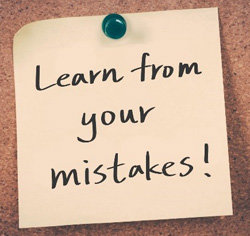 Allow them to learn about consequences, but only if your goal for your children is to become responsible adults, making it on their own and taking care of their business. The small goofy, poor decisions are necessary for maturation. Will they get hurt? YES. Will they have a broken heart, a lost friendship, a broken toy, a skinned knee? YES. And they will learn. Not letting them experience life’s bumps, leads to a man-child or a woman-child who looks to others and possibly to addictions for fulfillment. They never grow up because they were never allowed to learn from life. Your protections and rescues do not serve them or you.
Allow them to learn about consequences, but only if your goal for your children is to become responsible adults, making it on their own and taking care of their business. The small goofy, poor decisions are necessary for maturation. Will they get hurt? YES. Will they have a broken heart, a lost friendship, a broken toy, a skinned knee? YES. And they will learn. Not letting them experience life’s bumps, leads to a man-child or a woman-child who looks to others and possibly to addictions for fulfillment. They never grow up because they were never allowed to learn from life. Your protections and rescues do not serve them or you.
Boundaries are a cornerstone of good self-care. Look for Part 2 and Part 3 of this series, “Set Boundaries for Healthy Self-Esteem” in upcoming blog posts. If you have not already, sign up for blog post email notifications here: Linda’s Blog Updates Signup. If you need a listening ear and any internal dialogue clean-up to accomplish this, get in touch with me for a Complimentary Discovery call. 800.242.7648.
Sep 12, 2019 | Inspiration For Your Life Path
Linda takes you on her journey from professional dental consultant to Retirement Coach
Failing retirement has been an interesting journey for me. Maybe once an entrepreneur, always an entrepreneur? Let me catch you up…

A butterfly was once in a cocoon. Snakes periodically shed their skin to keep growing. Life invites us to re-invent and re-imagine. In 2014, Ted and I moved to Ventura, CA to be near family. As I then flew in and out of LAX to see clients, I grew weary of the travel. Hence, I was ready for change.
In 2017, four capable dental consultant associates bought my dental consulting business. Then, I began to explore “What’s Next?” I was not ready to settle into golf and TV. I gave volunteering a go and decided that was like having a boss in different clothing.
During this transformation, I recalled how life coaches helped me pre-divorce, after divorce, and then building healthy relationships with Ted and my adult children. Business coaches helped me build my consulting business and taught me how to sell it. I personally know the life changing value of coaches.

Patrick Harbula, a minister, life coach, and native American shaman first taught me coaching. Patrick became my teacher, coach and mentor as I learned the skills of a Life Coach. In 2018, I became a Certified Life Coach under Patrick’s tutelage.
As I began seeing clients, I knew this was the right new path for me. I delight in my client’s “Aha’s” as they break through limiting beliefs and barriers to success in relationships, in business and in life.
Being devoted to personal growth and a dedicated lifelong learner, I kept studying. One favorite life coach used NLP, Neuro-linguistic Programming* as her core coaching methodology. I still recall her helping me break through some old limiting beliefs and barriers. California is NLP’s birthplace, so it is rife with NLP courses. After exploring, I chose Michael Stevenson’s Transform Destiny course and certification.

Transform Destiny has opened a “Whole New World” (kudos to Disney for the phrase) for me and my clients as I Re-Tool. My first level was NLP Practitioner. Next, came NLP Master Practitioner. These two levels of methodologies now help my clients. My NLP training includes:
√ Master Life Success Coach
√ Master Business and Relationship Coach
√ Master Time Techniques Coach
√ Master NLP Practitioner
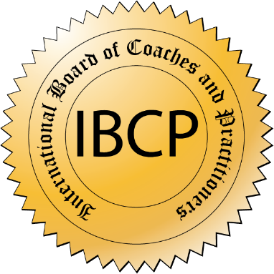
*
NLP – Neurolinguistic Programming was created in California in the 1970’s. NLP’s basis is modeling excellence and looking at the connection between neurological processes (neuro-), language (linguistic) and behavioral patterns that we learn through experience (programming). Once understood, the programing that is not serving the client can be identified and the patterns can be changed to achieve a more successful and fulfilling life.Along the path, I discovered that I was not the only Baby Boomer who failed retirement. There are many of us who seem to want to re-invent retirement and not settle for the old model our parents followed. Thus, I added Retirement Coaching to my expertise.
Re-Engaging includes completing one third of a new book. The working title is
Paths to Re-Imagined Retirement: A Field Guide for Savvy Retirees. My research for the book led me to offer an
upcoming course on my methods and processes of
Re-Imagining Retirement. Check out this EventBrite link to find out more:
bit.ly/34h8Yzs .Or view it in the
Event page section of this website.
Life is good. My new business is growing. I want it to remain at a size that allows me to enjoy my grandchildren, enjoy adventures with Ted and time to be of service at my spiritual center.

Aug 12, 2019 | Inspiration For Your Life Path
Remember when you were on a road trip with your parents when you were a child? After riding in the car for a while you asked, “When are we going to get there?” As adults, people are still stuck in that thinking mode. It sounds like this… When am I going to be thin enough? When am I ever going to get the job of my dreams? When is my significant other ever going to…? When are MY parents going to leave me alone to live my own life? When are my kids going to stop bugging me?
People are goal seekers. That can be a good thing. However, when the future is the only place that happiness and contentment seem to live, life gets put on hold while internally you scream, “When am I going to get THERE?” Life is a series of steps. Think of life in pursuit of your dreams as the experience of being on a river raft. Sometimes there are rapids and sometimes there are doldrums, but around every bend is a new experience to embrace.
How does one pursue one’s dreams and at the same time enjoy life happening now? There are two steps along your life path that can be helpful.
-
 Learn to Be Present Where You Are Now. This is the skill of mindfulness. Learn control of that Monkey Mind that tries to run us around in thought circles. Be present NOW by learning to STOP and Breathe literally. It sounds simple, and breathing may seem like it is effortless and second nature, but unknowingly, most people are shallow breathers. People take light high chest breaths that keep them in their head rather than in their full body. Lungs are made like bellows. Their full expansion and ability to supply oxygen to your body, especially your brain, is enhanced by a deep “Buddha belly” breath. Imagine for a moment that you are sitting like that happy fat Buddha. He has a nice full round belly. When you breathe in, feel the air go all the way into that belly. Expand your lungs like you are getting ready to do a Tarzan yell. Pull air all the way into the bottom of your belly. Hold it for a second and then push the air out with an audible sound. Some people say “Ha” long and slow as they exhale.
Learn to Be Present Where You Are Now. This is the skill of mindfulness. Learn control of that Monkey Mind that tries to run us around in thought circles. Be present NOW by learning to STOP and Breathe literally. It sounds simple, and breathing may seem like it is effortless and second nature, but unknowingly, most people are shallow breathers. People take light high chest breaths that keep them in their head rather than in their full body. Lungs are made like bellows. Their full expansion and ability to supply oxygen to your body, especially your brain, is enhanced by a deep “Buddha belly” breath. Imagine for a moment that you are sitting like that happy fat Buddha. He has a nice full round belly. When you breathe in, feel the air go all the way into that belly. Expand your lungs like you are getting ready to do a Tarzan yell. Pull air all the way into the bottom of your belly. Hold it for a second and then push the air out with an audible sound. Some people say “Ha” long and slow as they exhale.
If you have never done this, you may feel lightheaded after a couple of these deep breaths. The next time that Monkey Mind is running you into too much future thinking OR just running you down, stop and smile. That’s right, just think of that happy Buddha and take one or two deep breaths. This breathing process brings you back into your body and into NOW. Use this when stress, frustration or worry from that Monkey Mind is running you around.
 Run that Monkey Mind Rather Than That Monkey Mind Running You. Our conscious mind can certainly get on a rant and make us miserable. The best step one can take to begin to tame that Monkey Mind is to be very clear what you DO want, stated in the positive. Much fodder for that Monkey Mind comes from thinking about what you DON’T want. “I don’t want to mess up. I don’t want to be late. I don’t like this job.” Yadda, yadda, yadda. The mind gets stuck in an infinite loop.Break out of the loop by taking time to focus on a clear picture of what you DO WANT. It goes like this: When Monkey Mind gives you a stressful thought, catch the thought and turn it around to what you DO want. This is called a Pivot.
Run that Monkey Mind Rather Than That Monkey Mind Running You. Our conscious mind can certainly get on a rant and make us miserable. The best step one can take to begin to tame that Monkey Mind is to be very clear what you DO want, stated in the positive. Much fodder for that Monkey Mind comes from thinking about what you DON’T want. “I don’t want to mess up. I don’t want to be late. I don’t like this job.” Yadda, yadda, yadda. The mind gets stuck in an infinite loop.Break out of the loop by taking time to focus on a clear picture of what you DO WANT. It goes like this: When Monkey Mind gives you a stressful thought, catch the thought and turn it around to what you DO want. This is called a Pivot.
Pivot from: “I don’t want to mess up” TO “I always know what to do in the right way.” Put in your mind a mental picture of a time you did just that.
Pivot from: “I don’t want to be late.” TO “I arrive on time easily and effortlessly.” Put in your mind a picture of a time you arrived on time. Bring that smile to your face.
Pivot from: “I don’t like this job.” TO “I am in preparation for my next best job opportunity as I do my best work each day.” Get a clear picture in your mind of the ideal, values-driven job you’d like.
 Seeking goals while being present now is a balancing act. There are times you can put the boat paddles down and rest, enjoying the river scenery. Then, there are times you need to paddle like hell to keep off the rocks and keep out of the eddies and rapids. In either place, a good deep breath helps keep your mind nourished, allowing you to enjoy this present moment.
Seeking goals while being present now is a balancing act. There are times you can put the boat paddles down and rest, enjoying the river scenery. Then, there are times you need to paddle like hell to keep off the rocks and keep out of the eddies and rapids. In either place, a good deep breath helps keep your mind nourished, allowing you to enjoy this present moment.
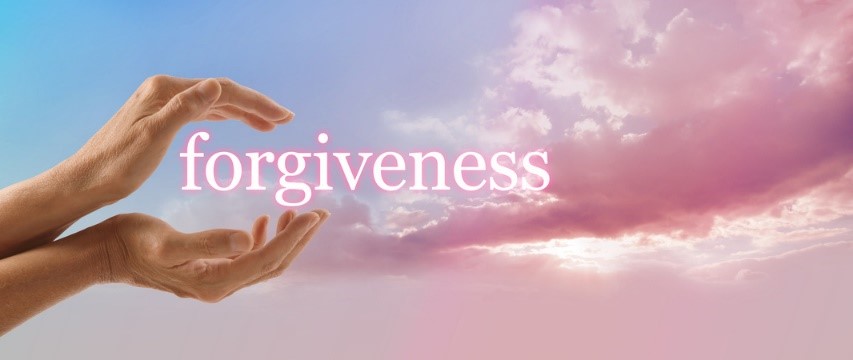
Jul 23, 2019 | Inspiration For Your Life Path
 No doubt about it, forgiveness is a tough one to wrangle our mind around. Our ego or conscious mind wants us to be “right” and to be justified in not forgiving. Forgiving can, on the surface, seem like being a doormat. Forgiving can seem like condoning the person’s actions. The hurt we took in when the offense occurred is real. It may seem that nothing should let them escape our condemnation, our loathing, our internal upset or our angst when even seeing that face, hearing that voice or being in their presence.
No doubt about it, forgiveness is a tough one to wrangle our mind around. Our ego or conscious mind wants us to be “right” and to be justified in not forgiving. Forgiving can, on the surface, seem like being a doormat. Forgiving can seem like condoning the person’s actions. The hurt we took in when the offense occurred is real. It may seem that nothing should let them escape our condemnation, our loathing, our internal upset or our angst when even seeing that face, hearing that voice or being in their presence.
Our unconscious mind holds the key. If we delve into the unconscious mind’s part in our upset, it is easy to see why it is hard to forgive. From birth, and some say before, we humans take in all sorts of impressions, messages and experiences and we store those memories and their associated feelings. This mental and emotional soup becomes our own personal brand, our way of seeing the world AND the way it SHOULD work.
 Every person on the planet has had different ingredients for their recipe making up that internal mental soup. Even twins or siblings do not have the same soup sloshing through their mind. Our subconscious stores all experiences, messages and cultural norms in a soup pot file cabinet along with the emotion that bubbled up with the experience. If the experience did not feel good, it causes a discordant imprint on our mind and the next time a similar experience, person, voice or message comes along, our subconscious takes us on a ride down the path of a REACTION. Reaction is “RE”-peating an old feeling associated with the past response.
Every person on the planet has had different ingredients for their recipe making up that internal mental soup. Even twins or siblings do not have the same soup sloshing through their mind. Our subconscious stores all experiences, messages and cultural norms in a soup pot file cabinet along with the emotion that bubbled up with the experience. If the experience did not feel good, it causes a discordant imprint on our mind and the next time a similar experience, person, voice or message comes along, our subconscious takes us on a ride down the path of a REACTION. Reaction is “RE”-peating an old feeling associated with the past response.
Perhaps we were four years old when a dog pushed us down and we became frightened. That fright can become attached to all dogs. Your friend has a dog that barks and tries to jump on you every time you visit. You become frustrated and upset that they do not control their dog and that they believe everyone loves their precious animal that jumps up on everyone.
You become upset with your friend’s lack of dog behavior management. You avoid going to visit. You resent that she doesn’t “get it” about her dog’s behavior. This now becomes a negative energy spot in you. Your friend is feeling no pain. She may wonder why you don’t come to her house anymore, but she is fine.
 Forgiving your friend’s behavior can seem like excusing her lack of dog control or management, or even her insensitivity to the fact that not all people love her dog as much as she does. Future return visits may require your honest boundary-setting. But forgiving is the only way to take the negative out of your subconscious and allow you to have a heartfelt conversation about the boundary. Holding onto the upset will only make the boundary conversation come out with an accusatory tone.
Forgiving your friend’s behavior can seem like excusing her lack of dog control or management, or even her insensitivity to the fact that not all people love her dog as much as she does. Future return visits may require your honest boundary-setting. But forgiving is the only way to take the negative out of your subconscious and allow you to have a heartfelt conversation about the boundary. Holding onto the upset will only make the boundary conversation come out with an accusatory tone.
Expecting the other person to understand what happened when you got your feelings hurt is not a part of forgiveness. Expecting the other person to say that they are sorry or apologize is not a part of forgiveness. The one-way street is your ability to forgive the other person, thoroughly and completely, within your own heart and soul without the other person participating. Which means you can even forgive those who have passed on. Learn the lesson from the experience. Take responsibility for your own hurt or feelings. People do what they do, say what they say and act the way they do from their own internal soup recipe.
The one-way street includes letting it go from your conversation with others and most of all with yourself. Re-hashing the situation and your upset keeps the negativity alive and well in your subconscious. You may want to write your feeling out in a journal (for your eyes only) to release the upset feelings and to let go. Forgiveness is a spiritual process. If you feel unable to let go and forgive, turn it over to God, the Divine, Jesus, Buddha, the angels or whoever you use as a spiritual guide or source.
 Withholding forgiveness only keeps the poison alive in you. Read or watch a You Tube™ video on the Hawaiian process called Ho’pono pono. This special chant’s words may seem strange to say when you are forgiving another. The process lets you return to love which is the way to live in peace.
Withholding forgiveness only keeps the poison alive in you. Read or watch a You Tube™ video on the Hawaiian process called Ho’pono pono. This special chant’s words may seem strange to say when you are forgiving another. The process lets you return to love which is the way to live in peace.
Keeping your mental closets and your heart space clean with the one-way street called forgiveness, especially forgiving yourself, helps you sleep better and gives you a new sense of peace in your world.

Feb 5, 2019 | Inspiration For Your Life Path

Valentine’s Day is just around the corner. Give yourself the gift of
Self-Care. Self-Care is knowing AND doing what nurtures you – Body, Mind and Soul. Be sure you have defined your own personal mission. This gives you the juice to enjoy every day and to live with passion in your heart.
Personal Mission Empowering Questions
The following are questions I have gathered in my own “search for mission.”
- Michael Beckwith: “What is my life purpose: What is seeking to emerge in and through my life?”
- David Owen Ritz: “What is the universal urge moving through you that desires unique, personal expression in your life?”
- Tererai Trent: “What is it that you are truly hungry for? What does your soul seek? What breaks your heart?”
- Cynthia James: “In an Ideal world, a world without limitations, who are you becoming?
“Too many of us are not living our dreams because we are living our fears.” – Les Brown
 Once you have a clear mission, you need to consider that the action to accomplish your mission takes energy. Your personal mission/vision needs your energy. Self-Care is about understanding and managing your energy. The only way to accomplish your mission/vision is to have the ENERGY to take the necessary actions to move into your vision.
Once you have a clear mission, you need to consider that the action to accomplish your mission takes energy. Your personal mission/vision needs your energy. Self-Care is about understanding and managing your energy. The only way to accomplish your mission/vision is to have the ENERGY to take the necessary actions to move into your vision.
“There’s no way you can fulfill your purpose in life unless you’re healthy enough to do so.” – Stephanie Hale Walker, MD, MPH
- Physical Self-Care: Nutritious food brings energy. Exercise brings in energy. 150 minutes per week of exercise of your choice.
Checklist Questions
 Do I maintain a healthy weight?
Do I maintain a healthy weight?- Do I participate in physical activity, exercise, at least 3 times per
- week?
- Do I keep hydrated?
- Do I eat healthy most of the time?
- Do I sleep well and get my rest most nights?
My tiny step NOW is ___________________________________________________________
- Environmental Self-Care: Clutter traps and holds energy. Clear clutter, piles and “stuff.” Open the air in every room to move around and caress you. Study Feng Shui. Feng Shui is the ancient Chinese art of creating space that nurtures you. It uses energy forces to harmonize individuals with their surrounding environment.
 Checklist Questions
Checklist Questions
- Do I keep clutter under control at Home?
- Do I keep clutter under control at Work?
- Have I tried Feng Shui? Here’s a Feng Shui tip-take a laundry basket around the house/workspace and get rid of 27 things.
My tiny step NOW is ______________________________________________________
 Financial Self-Care: Pay Yourself and invest in your future. Tithe to people and places that nurture you, sources of inspiration or the cause that lights up your life. Then live on the rest.
Financial Self-Care: Pay Yourself and invest in your future. Tithe to people and places that nurture you, sources of inspiration or the cause that lights up your life. Then live on the rest.
Checklist Questions
- Do I live a bit below my means so that money stress is not a part of my life?
- Do I pay myself 10% of my earning at the beginning of the month so I don’t pay myself last?
My tiny step NOW is ______________________________________________________
 Social Self-Care: Associate with supportive, uplifting people. Remove those who are toxic. If you can’t remove them, limit your exposure and treat yourself with a protective shield before being with them.
Social Self-Care: Associate with supportive, uplifting people. Remove those who are toxic. If you can’t remove them, limit your exposure and treat yourself with a protective shield before being with them.
Checklist Questions
- Do I have a nurturing circle of friends?
- Is my family my greatest source of support and nurture?
- Do I know how to handle myself when around toxic people I cannot avoid?
My tiny step NOW is ___________________________________________________________
 Mental Self-Care: Only allow positive self-talk. Learn to tame your inner critic, inner rebel, inner victim, inner rescuer, inner over-responsible self, inner procrastinator, inner ______, inner “Eeyore.”
Mental Self-Care: Only allow positive self-talk. Learn to tame your inner critic, inner rebel, inner victim, inner rescuer, inner over-responsible self, inner procrastinator, inner ______, inner “Eeyore.”
Checklist Questions
- Do I know how to handle my stress so that it does not harm me or others?
- Do I know that my mind can be my greatest ally or my greatest barrier to me being “ALL I CAN BE”?
My tiny step NOW is ______________________________________________________
- Soul/Spiritual Self-Care: Meditation, yoga, mindfulness, prayer, class or spiritual center attendance, reading/listening to inspirational books, webinars or podcasts all feed your soul’s care.

Checklist Questions
- Do I nurture my soul with spiritual practice, creative endeavors, meditation, or mindfulness practices?
- Do I know that time in nature is a part of feeding my soul?
My tiny step NOW is ___________________________________________________________
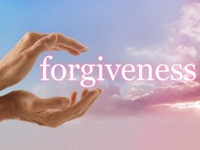 Emotional Self-Care: Forgiveness-work on old wounds and any new wounds-opens your heart and soul to live in joy, love and acceptance. Be open to the journey of becoming the whole, free and authentic loving being which is your birthright.
Emotional Self-Care: Forgiveness-work on old wounds and any new wounds-opens your heart and soul to live in joy, love and acceptance. Be open to the journey of becoming the whole, free and authentic loving being which is your birthright.
- Find the H’oponopono Hawaiian meditation on You Tube™ and use it to clear your wounds,
My tiny step NOW is ___________________________________________________________
Whitney Houston said it best, “Learning to Love yourself is the greatest love of all.” Take time this Valentine’s Day to take an inventory of caring for yourself so that you can go out and make the world a better place because you took action on your personal mission.


 Read and meditate/pray on Gibran’s words. Journal any feelings, upsets or dashed expectations about your adult children.
Read and meditate/pray on Gibran’s words. Journal any feelings, upsets or dashed expectations about your adult children. Add that to the fact that I ran my consulting business out of our den. I could envision a crying newborn in the background while I am talking to a client.
Add that to the fact that I ran my consulting business out of our den. I could envision a crying newborn in the background while I am talking to a client. Go on your own self -discovery journey as an empty nester. Your job is to discover what makes you happy. Once you know what makes you happy, you can share that with others, including your adult children. More than anything, children need to learn the consequences of their behavior, (Cause and Effect). Children are here to experience life and the lessons that come with life events. Some seem to be here for hard lessons, while others seem to have it easier. Ours is not to ask “Why?”
Go on your own self -discovery journey as an empty nester. Your job is to discover what makes you happy. Once you know what makes you happy, you can share that with others, including your adult children. More than anything, children need to learn the consequences of their behavior, (Cause and Effect). Children are here to experience life and the lessons that come with life events. Some seem to be here for hard lessons, while others seem to have it easier. Ours is not to ask “Why?”
 Setting and keeping boundaries are foundations for healthy relationships, healthy self-esteem and worthiness. Healthy self-esteem allows you to take care of yourself, your values and needs in a healthy relationship. The funny thing is that life constantly presents you with the balancing act between OTHERS’ needs, wants and desires and YOUR own needs, wants and desires.
Setting and keeping boundaries are foundations for healthy relationships, healthy self-esteem and worthiness. Healthy self-esteem allows you to take care of yourself, your values and needs in a healthy relationship. The funny thing is that life constantly presents you with the balancing act between OTHERS’ needs, wants and desires and YOUR own needs, wants and desires. Let’s talk about your children, (the ones that are your dependents – boundaries for adult children will be another installment), here in Part One. A child’s happiness is a fleeting thing from the toddler’s temper tantrums to those unpredictable teen moods. As a parent, your job is not your child’s happiness. A child’s happiness meter can be a black hole of emotional ups and downs. Some are meant to play to your vulnerable side. If a child learns that you hold their happiness above and beyond all else, they will learn to play you. They learn that if they protest about your boundary or the restriction you impose because of their inappropriate behavior, you will give in to make them happy. They play you. They learn manipulative behavior that they take into their adult life.
Let’s talk about your children, (the ones that are your dependents – boundaries for adult children will be another installment), here in Part One. A child’s happiness is a fleeting thing from the toddler’s temper tantrums to those unpredictable teen moods. As a parent, your job is not your child’s happiness. A child’s happiness meter can be a black hole of emotional ups and downs. Some are meant to play to your vulnerable side. If a child learns that you hold their happiness above and beyond all else, they will learn to play you. They learn that if they protest about your boundary or the restriction you impose because of their inappropriate behavior, you will give in to make them happy. They play you. They learn manipulative behavior that they take into their adult life. Will there be times when you are miserable because they are miserable with a restriction? YES. Will there be times you want to take the easy way out and let them have their way? YES. Will they pout and huff and puff at the restriction? YES. Your job is to set the boundaries and use appropriate consequences. Their job is to understand that if they break the boundary, there is a consequence. I am not talking about unrealistic strictness. Fair boundaries are important for children to learn. This means that if the boundary is no TV, video games, iPad, or friends over until homework is done, then that is the boundary.
Will there be times when you are miserable because they are miserable with a restriction? YES. Will there be times you want to take the easy way out and let them have their way? YES. Will they pout and huff and puff at the restriction? YES. Your job is to set the boundaries and use appropriate consequences. Their job is to understand that if they break the boundary, there is a consequence. I am not talking about unrealistic strictness. Fair boundaries are important for children to learn. This means that if the boundary is no TV, video games, iPad, or friends over until homework is done, then that is the boundary. Allow them to learn about consequences, but only if your goal for your children is to become responsible adults, making it on their own and taking care of their business. The small goofy, poor decisions are necessary for maturation. Will they get hurt? YES. Will they have a broken heart, a lost friendship, a broken toy, a skinned knee? YES. And they will learn. Not letting them experience life’s bumps, leads to a man-child or a woman-child who looks to others and possibly to addictions for fulfillment. They never grow up because they were never allowed to learn from life. Your protections and rescues do not serve them or you.
Allow them to learn about consequences, but only if your goal for your children is to become responsible adults, making it on their own and taking care of their business. The small goofy, poor decisions are necessary for maturation. Will they get hurt? YES. Will they have a broken heart, a lost friendship, a broken toy, a skinned knee? YES. And they will learn. Not letting them experience life’s bumps, leads to a man-child or a woman-child who looks to others and possibly to addictions for fulfillment. They never grow up because they were never allowed to learn from life. Your protections and rescues do not serve them or you. A butterfly was once in a cocoon. Snakes periodically shed their skin to keep growing. Life invites us to re-invent and re-imagine. In 2014, Ted and I moved to Ventura, CA to be near family. As I then flew in and out of LAX to see clients, I grew weary of the travel. Hence, I was ready for change.
A butterfly was once in a cocoon. Snakes periodically shed their skin to keep growing. Life invites us to re-invent and re-imagine. In 2014, Ted and I moved to Ventura, CA to be near family. As I then flew in and out of LAX to see clients, I grew weary of the travel. Hence, I was ready for change. Patrick Harbula, a minister, life coach, and native American shaman first taught me coaching. Patrick became my teacher, coach and mentor as I learned the skills of a Life Coach. In 2018, I became a Certified Life Coach under Patrick’s tutelage.
Patrick Harbula, a minister, life coach, and native American shaman first taught me coaching. Patrick became my teacher, coach and mentor as I learned the skills of a Life Coach. In 2018, I became a Certified Life Coach under Patrick’s tutelage.
 *NLP – Neurolinguistic Programming was created in California in the 1970’s. NLP’s basis is modeling excellence and looking at the connection between neurological processes (neuro-), language (linguistic) and behavioral patterns that we learn through experience (programming). Once understood, the programing that is not serving the client can be identified and the patterns can be changed to achieve a more successful and fulfilling life.
*NLP – Neurolinguistic Programming was created in California in the 1970’s. NLP’s basis is modeling excellence and looking at the connection between neurological processes (neuro-), language (linguistic) and behavioral patterns that we learn through experience (programming). Once understood, the programing that is not serving the client can be identified and the patterns can be changed to achieve a more successful and fulfilling life.
 Learn to Be Present Where You Are Now. This is the skill of mindfulness. Learn control of that Monkey Mind that tries to run us around in thought circles. Be present NOW by learning to STOP and Breathe literally. It sounds simple, and breathing may seem like it is effortless and second nature, but unknowingly, most people are shallow breathers. People take light high chest breaths that keep them in their head rather than in their full body. Lungs are made like bellows. Their full expansion and ability to supply oxygen to your body, especially your brain, is enhanced by a deep “Buddha belly” breath. Imagine for a moment that you are sitting like that happy fat Buddha. He has a nice full round belly. When you breathe in, feel the air go all the way into that belly. Expand your lungs like you are getting ready to do a Tarzan yell. Pull air all the way into the bottom of your belly. Hold it for a second and then push the air out with an audible sound. Some people say “Ha” long and slow as they exhale.
Learn to Be Present Where You Are Now. This is the skill of mindfulness. Learn control of that Monkey Mind that tries to run us around in thought circles. Be present NOW by learning to STOP and Breathe literally. It sounds simple, and breathing may seem like it is effortless and second nature, but unknowingly, most people are shallow breathers. People take light high chest breaths that keep them in their head rather than in their full body. Lungs are made like bellows. Their full expansion and ability to supply oxygen to your body, especially your brain, is enhanced by a deep “Buddha belly” breath. Imagine for a moment that you are sitting like that happy fat Buddha. He has a nice full round belly. When you breathe in, feel the air go all the way into that belly. Expand your lungs like you are getting ready to do a Tarzan yell. Pull air all the way into the bottom of your belly. Hold it for a second and then push the air out with an audible sound. Some people say “Ha” long and slow as they exhale.
 Run that Monkey Mind Rather Than That Monkey Mind Running You. Our conscious mind can certainly get on a rant and make us miserable. The best step one can take to begin to tame that Monkey Mind is to be very clear what you DO want, stated in the positive. Much fodder for that Monkey Mind comes from thinking about what you DON’T want. “I don’t want to mess up. I don’t want to be late. I don’t like this job.” Yadda, yadda, yadda. The mind gets stuck in an infinite loop.Break out of the loop by taking time to focus on a clear picture of what you DO WANT. It goes like this: When Monkey Mind gives you a stressful thought, catch the thought and turn it around to what you DO want. This is called a Pivot.
Run that Monkey Mind Rather Than That Monkey Mind Running You. Our conscious mind can certainly get on a rant and make us miserable. The best step one can take to begin to tame that Monkey Mind is to be very clear what you DO want, stated in the positive. Much fodder for that Monkey Mind comes from thinking about what you DON’T want. “I don’t want to mess up. I don’t want to be late. I don’t like this job.” Yadda, yadda, yadda. The mind gets stuck in an infinite loop.Break out of the loop by taking time to focus on a clear picture of what you DO WANT. It goes like this: When Monkey Mind gives you a stressful thought, catch the thought and turn it around to what you DO want. This is called a Pivot.
 Seeking goals while being present now is a balancing act. There are times you can put the boat paddles down and rest, enjoying the river scenery. Then, there are times you need to paddle like hell to keep off the rocks and keep out of the eddies and rapids. In either place, a good deep breath helps keep your mind nourished, allowing you to enjoy this present moment.
Seeking goals while being present now is a balancing act. There are times you can put the boat paddles down and rest, enjoying the river scenery. Then, there are times you need to paddle like hell to keep off the rocks and keep out of the eddies and rapids. In either place, a good deep breath helps keep your mind nourished, allowing you to enjoy this present moment.
 No doubt about it, forgiveness is a tough one to wrangle our mind around. Our ego or conscious mind wants us to be “right” and to be justified in not forgiving. Forgiving can, on the surface, seem like being a doormat. Forgiving can seem like condoning the person’s actions. The hurt we took in when the offense occurred is real. It may seem that nothing should let them escape our condemnation, our loathing, our internal upset or our angst when even seeing that face, hearing that voice or being in their presence.
No doubt about it, forgiveness is a tough one to wrangle our mind around. Our ego or conscious mind wants us to be “right” and to be justified in not forgiving. Forgiving can, on the surface, seem like being a doormat. Forgiving can seem like condoning the person’s actions. The hurt we took in when the offense occurred is real. It may seem that nothing should let them escape our condemnation, our loathing, our internal upset or our angst when even seeing that face, hearing that voice or being in their presence. Every person on the planet has had different ingredients for their recipe making up that internal mental soup. Even twins or siblings do not have the same soup sloshing through their mind. Our subconscious stores all experiences, messages and cultural norms in a soup pot file cabinet along with the emotion that bubbled up with the experience. If the experience did not feel good, it causes a discordant imprint on our mind and the next time a similar experience, person, voice or message comes along, our subconscious takes us on a ride down the path of a REACTION. Reaction is “RE”-peating an old feeling associated with the past response.
Every person on the planet has had different ingredients for their recipe making up that internal mental soup. Even twins or siblings do not have the same soup sloshing through their mind. Our subconscious stores all experiences, messages and cultural norms in a soup pot file cabinet along with the emotion that bubbled up with the experience. If the experience did not feel good, it causes a discordant imprint on our mind and the next time a similar experience, person, voice or message comes along, our subconscious takes us on a ride down the path of a REACTION. Reaction is “RE”-peating an old feeling associated with the past response. Forgiving your friend’s behavior can seem like excusing her lack of dog control or management, or even her insensitivity to the fact that not all people love her dog as much as she does. Future return visits may require your honest boundary-setting. But forgiving is the only way to take the negative out of your subconscious and allow you to have a heartfelt conversation about the boundary. Holding onto the upset will only make the boundary conversation come out with an accusatory tone.
Forgiving your friend’s behavior can seem like excusing her lack of dog control or management, or even her insensitivity to the fact that not all people love her dog as much as she does. Future return visits may require your honest boundary-setting. But forgiving is the only way to take the negative out of your subconscious and allow you to have a heartfelt conversation about the boundary. Holding onto the upset will only make the boundary conversation come out with an accusatory tone. Withholding forgiveness only keeps the poison alive in you. Read or watch a You Tube™ video on the Hawaiian process called Ho’pono pono. This special chant’s words may seem strange to say when you are forgiving another. The process lets you return to love which is the way to live in peace.
Withholding forgiveness only keeps the poison alive in you. Read or watch a You Tube™ video on the Hawaiian process called Ho’pono pono. This special chant’s words may seem strange to say when you are forgiving another. The process lets you return to love which is the way to live in peace.
 Valentine’s Day is just around the corner. Give yourself the gift of Self-Care. Self-Care is knowing AND doing what nurtures you – Body, Mind and Soul. Be sure you have defined your own personal mission. This gives you the juice to enjoy every day and to live with passion in your heart.
Valentine’s Day is just around the corner. Give yourself the gift of Self-Care. Self-Care is knowing AND doing what nurtures you – Body, Mind and Soul. Be sure you have defined your own personal mission. This gives you the juice to enjoy every day and to live with passion in your heart. Once you have a clear mission, you need to consider that the action to accomplish your mission takes energy. Your personal mission/vision needs your energy. Self-Care is about understanding and managing your energy. The only way to accomplish your mission/vision is to have the ENERGY to take the necessary actions to move into your vision.
Once you have a clear mission, you need to consider that the action to accomplish your mission takes energy. Your personal mission/vision needs your energy. Self-Care is about understanding and managing your energy. The only way to accomplish your mission/vision is to have the ENERGY to take the necessary actions to move into your vision. Do I maintain a healthy weight?
Do I maintain a healthy weight? Checklist Questions
Checklist Questions Financial Self-Care: Pay Yourself and invest in your future. Tithe to people and places that nurture you, sources of inspiration or the cause that lights up your life. Then live on the rest.
Financial Self-Care: Pay Yourself and invest in your future. Tithe to people and places that nurture you, sources of inspiration or the cause that lights up your life. Then live on the rest. Social Self-Care: Associate with supportive, uplifting people. Remove those who are toxic. If you can’t remove them, limit your exposure and treat yourself with a protective shield before being with them.
Social Self-Care: Associate with supportive, uplifting people. Remove those who are toxic. If you can’t remove them, limit your exposure and treat yourself with a protective shield before being with them. Mental Self-Care: Only allow positive self-talk. Learn to tame your inner critic, inner rebel, inner victim, inner rescuer, inner over-responsible self, inner procrastinator, inner ______, inner “Eeyore.”
Mental Self-Care: Only allow positive self-talk. Learn to tame your inner critic, inner rebel, inner victim, inner rescuer, inner over-responsible self, inner procrastinator, inner ______, inner “Eeyore.”
 Emotional Self-Care: Forgiveness-work on old wounds and any new wounds-opens your heart and soul to live in joy, love and acceptance. Be open to the journey of becoming the whole, free and authentic loving being which is your birthright.
Emotional Self-Care: Forgiveness-work on old wounds and any new wounds-opens your heart and soul to live in joy, love and acceptance. Be open to the journey of becoming the whole, free and authentic loving being which is your birthright.


